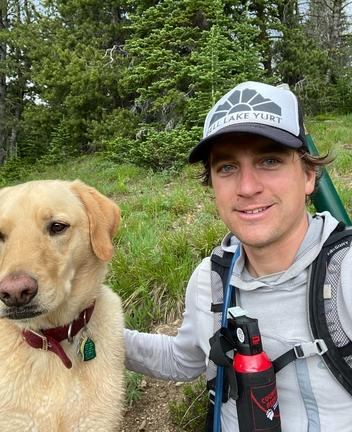Back to StoriesNo Ref 1 Organizers get out Vote in Park County
May 17, 2024
No Ref 1 Organizers get out Vote in Park CountyWith less than three weeks from a vote, county growth policy proponents look to safeguard rural way of life
by David
Tucker
In Park
County, there’s not much left to do but vote. With ballots mailed to registered
voters May 10, the eleventh hour has arrived, and the future of the county growth
policy—and the singular landscape it addresses—hangs in the balance.
At a
virtual town hall meeting on May 16, Vote No Ref 1 organizers kept their message
simple. “Vote no,” said treasurer Colin Davis, former owner of Chico Hot
Springs and longtime Park County resident. “It’s fair to say the growth policy
helps determine the future of our community. It’s the future of Park County
that is really on the ballot.”
With less
than a month to go before the June 4 vote, campaigners have been applying a
full-court press of community outreach, including in-person gatherings from
Gardiner to Wilsall. Advocates continue to educate around several key messages,
mobilizing support for the current policy while the planning department works on an update.
“Over 800
people commented on the existing growth policy when it was created,” said Randy
Carpenter, Friends of Park County executive director and longtime professional
planner. “The comments people made back then echo what we found in our polling.
They highly value water quality, open space, rural character, wildlife and
agriculture.”
According
to the most recent We Will Park County survey, 94 percent of respondents agree
that preserving natural resources is important, and 53 percent identified the
landscape as the thing they like most about living in Park County. Natural
amenities were second on the list, and quality of life third.
It is
exactly those values No Ref 1 organizers hope to protect. “The growth policy reflects
the values and concerns … of the people who live here,” Carpenter continued, “and
unplanned haphazard development threatens those values.”
Speaking
from experience, Carlotta Grandstaff offered insights as a former commissioner
in Ravalli County, the only county in Montana to have repealed its policy. “I
got a lot of phone calls… from people very unhappy with things going on in
their neighborhoods,” she said, citing a busy weekend flea market in a rural
area, an around-the-clock sawmill near homes, and a gravel pit on an
undeveloped lot in the middle of a neighborhood.
According to a recent survey, 94 percent of respondents agree that preserving natural resources is important, and 53 percent identified the landscape as the thing they like most about living in Park County.
While proponents
believe retaining a sound planning document should be motivation enough to keep
the policy, there are also practical reasons to consider. Grant funding that
supports critical services could be unavailable without a growth policy, and in
a county with a budget deficit, every dollar counts.
At an April 9 commission meeting, $200,000 was cut from the Park
County Sheriff’s Department and an additional $200,000 was cut from the county
roads budget, after which the county remained $150,000 over budget.
According
to commissioner Clint Tinsley, the county has received $56 million in grants
tied to growth policy requirements just in his time on the commission, and of
the 264 bridges in the county, half need upgrades.
“Scrapping
this growth policy will negatively impact the level of funding and support we
receive to maintain our rural roads, our bridges and our infrastructure in the
county,” Davis said at the virtual town hall on May 16. Frank O’Connor, a small-business
owner and former planning board member, reiterated the policy’s financial
significance. “If we don’t have a growth policy, we’re going to be throwing
away a lot of money.”
With
ballots in mailboxes, the referendum is a reality, and in less than a month the
county will have a result.
“It’s
important to start with values,” Carpenter said. “What do people care about and
what are the threats to those values? That’s why repealing the growth policy
would be such a crazy idea, especially in a time of unprecedented growth.”
For
registered voters in Park County, the opportunity to inform the future is now.
Ballots must be returned in person or by mail by June 4 at 8 p.m.
________________________________________________________________________________________________________________________
Mountain Journal is the only nonprofit, public-interest journalism organization of its kind dedicated to covering the wildlife and wild lands of Greater Yellowstone. We take pride in our work, yet to keep bold, independent journalism free, we need your support. Please donate here. Thank you.
Related Stories
May 2, 2024
Bears Emerge from Slumber in Greater Yellowstone
As bruins make spring entrance
in the GYE, federal
agencies announce the reintroduction of grizzlies in the North Cascades.
May 29, 2025
Montana Health Officials Monitoring Deer Ticks After 2024 Discovery
Lyme disease-prone ticks identified last year prompt surveillance effort from state health department, public encouraged to ID and report ticks.
February 13, 2025
Bill Would Redraw Lines Between Wyoming Trappers, Trail Users
Lawmakers
push to give wildlife officials authority to end unrestricted trapping access on public lands.




